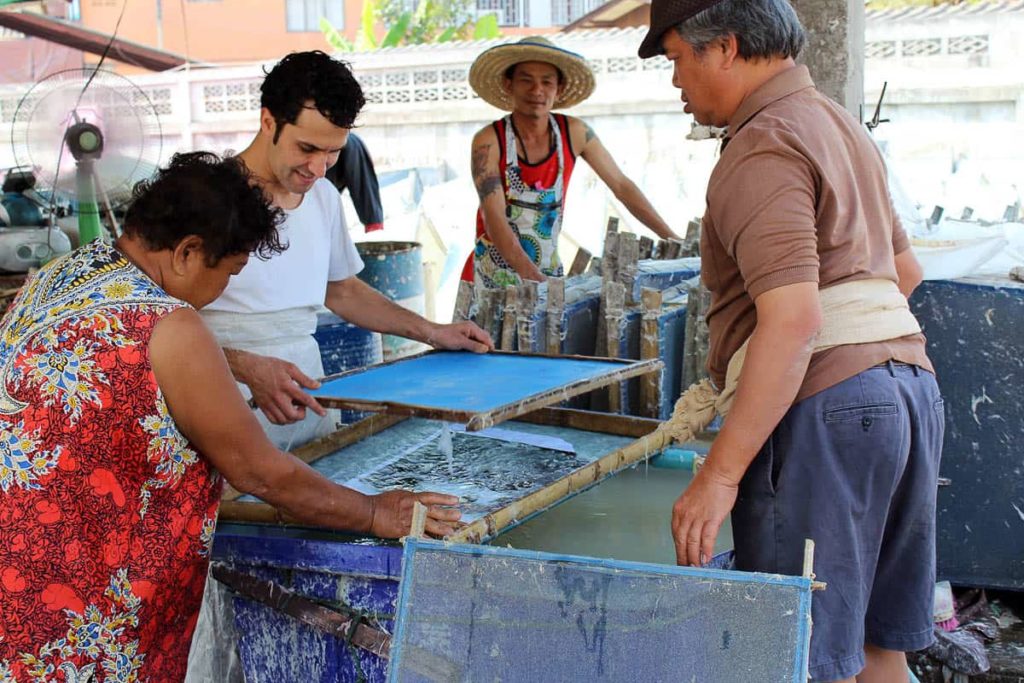
Rushdi Anwar, Hanging Issues, 2010, the process of making the paper at the Preservation House Paper Mill and craft in Ban Ton Pao – Chiang Mai – Thailand
Pamela See introduces our collection of stories about paper. Enjoy how this ephemeral and ubiquitous substance not only carries information but can also form objects of beauty and meaning in itself.
“Paper seems an unlikely invention – breaking wood or fabric down into its cellulose fibers, diluting them with water, and passing the resulting liquid over a screen so that it randomly weaves and forms a sheet is not an idea that would logically come to mind, especially in an age when no one knew what cellulose was.”
Mark Kurlansky Paper: Paging Through History.
In this feature of the Garden of Stories, artists and academics from across the world provide accounts of how the material and its methods of making are presently being engaged.
Rushdi Anwar eloquently encapsulates the appeal of his medium by writing, “handmade paper reveals the touch of the time of its making”. By layering mulberry pulp onto photographic prints in the Thai Kada Saa tradition, he creates a membrane-like quality that emphasizes the vulnerability of the subjects depicted.
By contrast, Gary Warner explores the exploits of Horst Kiechle. His peculiar paper sculptures reflect an amalgamation of “digital 3d modelling, self-written computer code… and meticulous making by hand”. Not unlike origami, the folds in these forms serve to structurally fortify and hold memories.
Equally robust is a selection of articles that directly harken back to ancient craft practices. The subjects include Jiseung by Eun Hye Kim and my jianzhi.
Whereas some authors refer to the contested origins of the substrate, others project a pathway the substance may provide to a more sustainable future. All of the stories speak to the versatility and viability of paper, its quality as a receptacle of ethos, pathos and logos, and the capacity it affords creatives to circulate them.
Pamela See is a Garland perennial: Pamela See ✿ A Renaissance woman
This feature is commemorated every 1 July, which marks the date in 751AD when Arab and Chinese forces fought over control of the Silk Road. The Chinese soldiers captured by Arabs brought the secret of papermaking to the Islamic world, and beyond.
✿
 Leonie Oakes ✿ Slippage - Leonie Oakes has been awarded our July Laurel for her paper dress that breathes.
Leonie Oakes ✿ Slippage - Leonie Oakes has been awarded our July Laurel for her paper dress that breathes.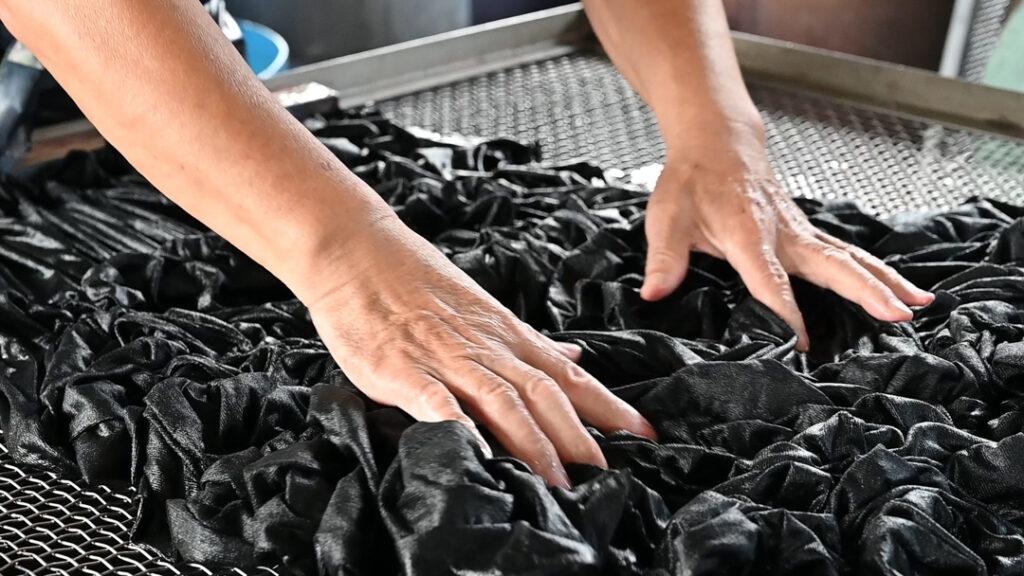 Kondo Weaving Mill: Industrial Japanese craftsmanship - Alisa Tietboehl writes about a Japanese weaving mill that sustains its local craft through skill and innovation.
Kondo Weaving Mill: Industrial Japanese craftsmanship - Alisa Tietboehl writes about a Japanese weaving mill that sustains its local craft through skill and innovation.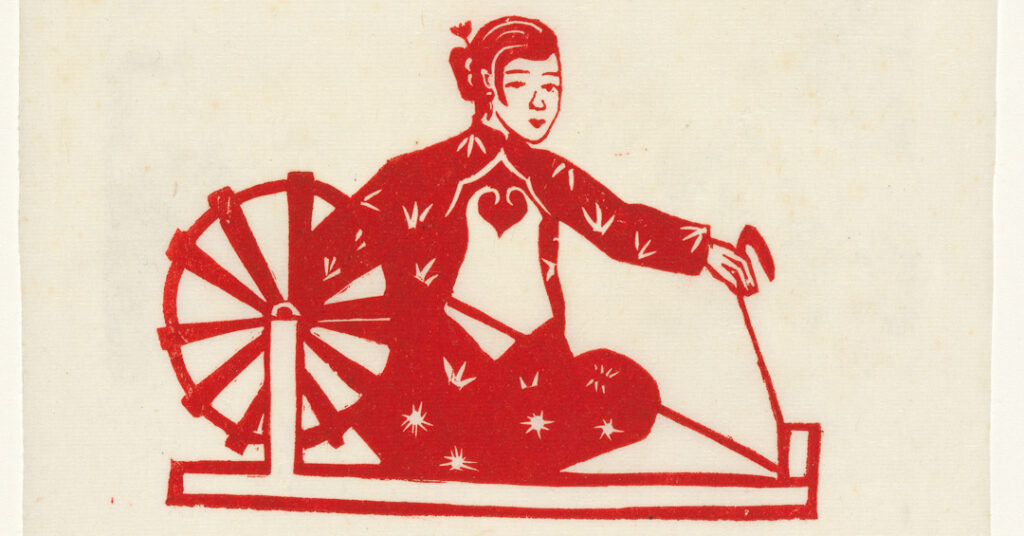 Crafting “natural” conceptions in and of China, of its nationhood and its people - Pamela See considers the key political role played by woodcut prints in Chinese communism.
Crafting “natural” conceptions in and of China, of its nationhood and its people - Pamela See considers the key political role played by woodcut prints in Chinese communism.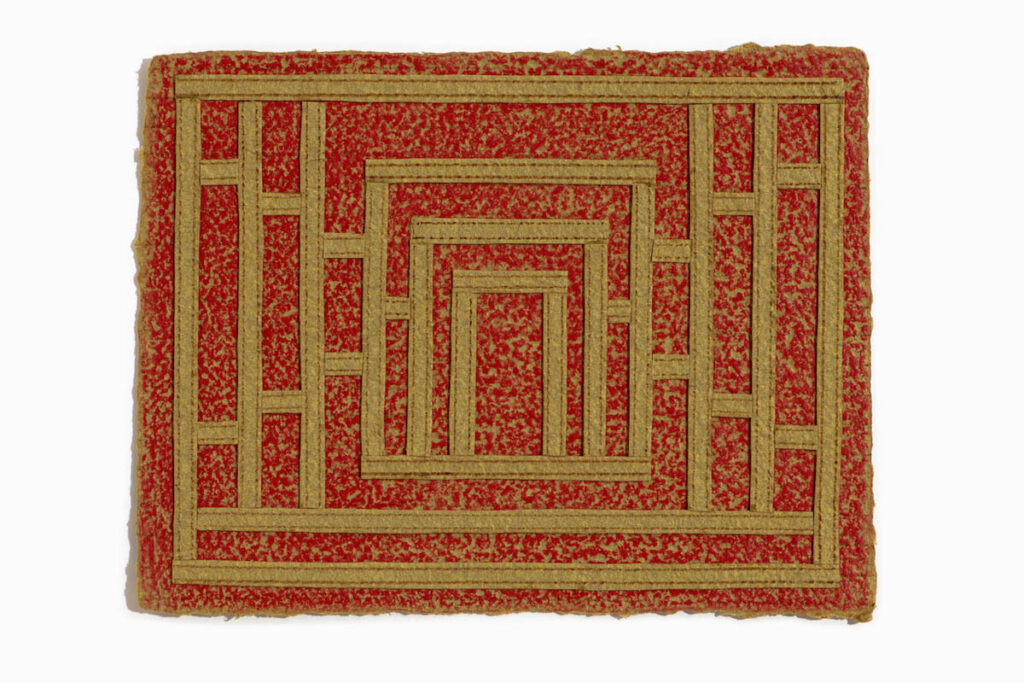 Jacqueline Rose ✿ Geometry at hand - For Jacqueline Millner, Jacqueline Rose's paper collages humanise geometry and enliven space
Jacqueline Rose ✿ Geometry at hand - For Jacqueline Millner, Jacqueline Rose's paper collages humanise geometry and enliven space The year of the paper tiger 🐅 - 新年快乐. Australian Papercut Artist's New Year Project re-interprets the tiger as a symbol of calm in an anxious time.
The year of the paper tiger 🐅 - 新年快乐. Australian Papercut Artist's New Year Project re-interprets the tiger as a symbol of calm in an anxious time. Pulp Friction: A paper trail from China - Embie Tan Aren writes about Pulp Friction, an exhibition at Queensland's Artisan gallery of paper works by Pamela See, Christine Ko and Yanqiao Jiang.
Pulp Friction: A paper trail from China - Embie Tan Aren writes about Pulp Friction, an exhibition at Queensland's Artisan gallery of paper works by Pamela See, Christine Ko and Yanqiao Jiang.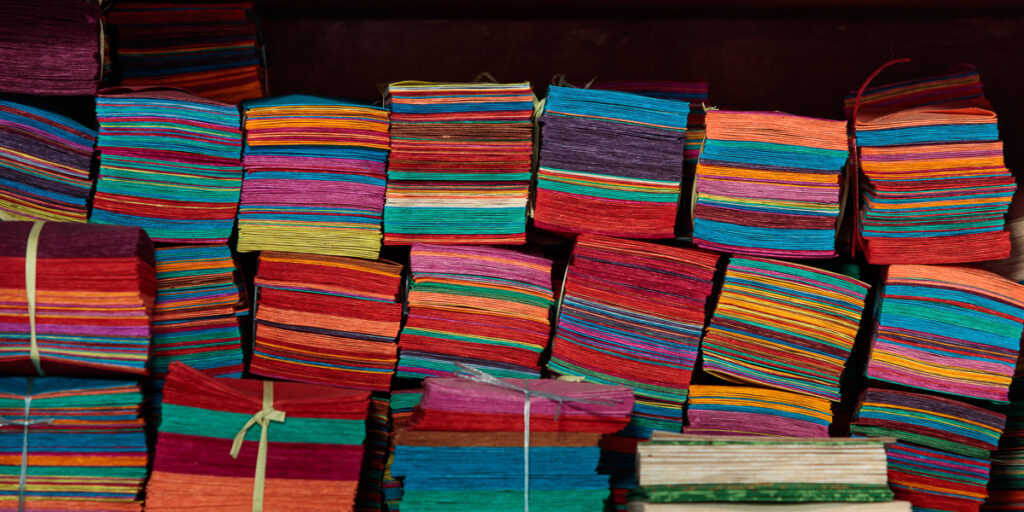 Colour thrives: The lokta paper makers of Kathmandu - Gary Wornell is captivated by the spirit of craft in Nepal and the success of Chhongnorbu Sherpa’s paper factory.
Colour thrives: The lokta paper makers of Kathmandu - Gary Wornell is captivated by the spirit of craft in Nepal and the success of Chhongnorbu Sherpa’s paper factory. Hamza ✿ Enter the circle - Kimsuka Iyer introduces Hamza, a Moroccan brass smith, bookbinder and oud musician.
Hamza ✿ Enter the circle - Kimsuka Iyer introduces Hamza, a Moroccan brass smith, bookbinder and oud musician.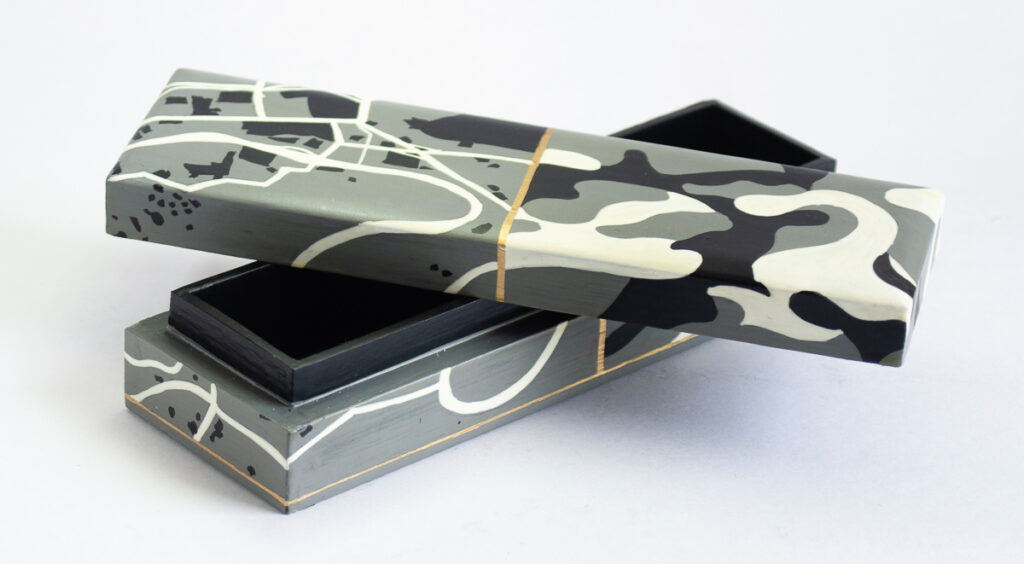 Kashmiriyat: Craft out of conflict - Harpreet Padam ventures to Kashmir for craft development, but finds the conflict difficult to ignore. He works with local artisans to develop papier maché objects that reflect their daily life.
Kashmiriyat: Craft out of conflict - Harpreet Padam ventures to Kashmir for craft development, but finds the conflict difficult to ignore. He works with local artisans to develop papier maché objects that reflect their daily life.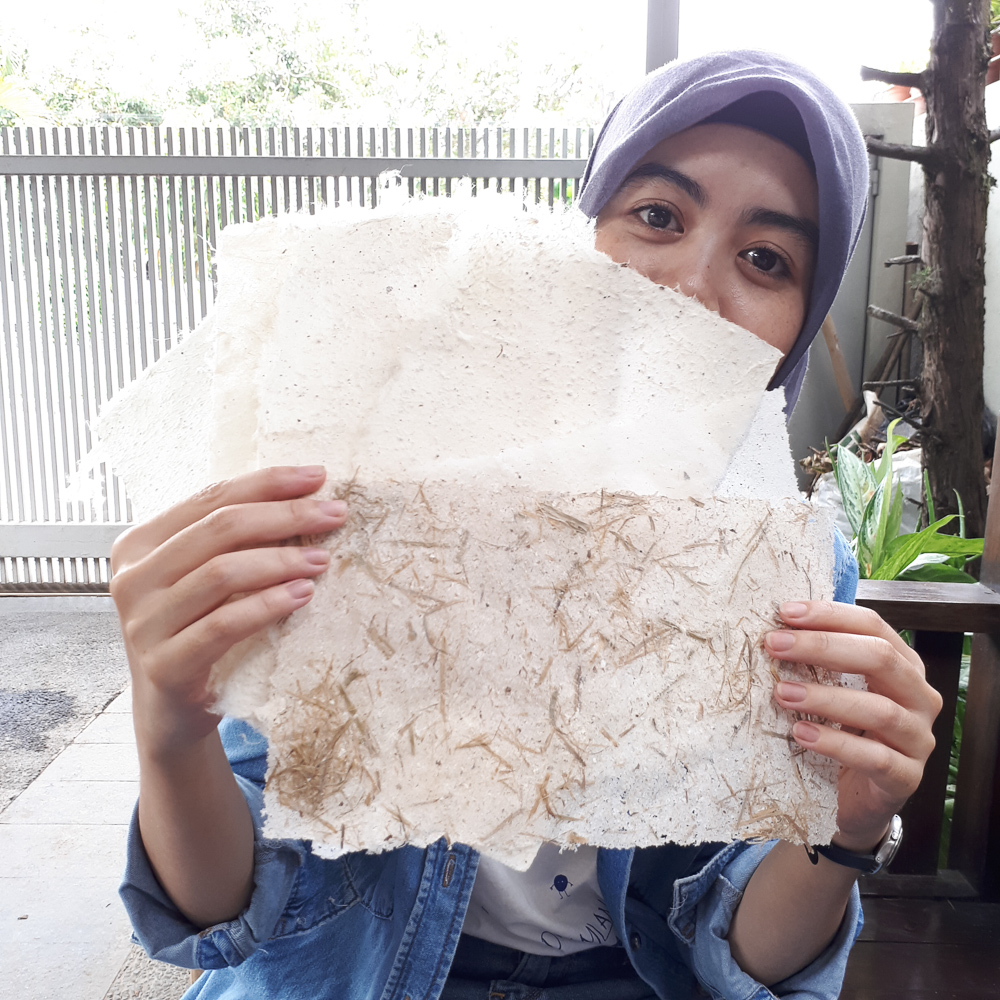 Fibres for a foodie - Sabrina Sakina has found a way of using the waste produced in cooking the Indonesian food she loves.
Fibres for a foodie - Sabrina Sakina has found a way of using the waste produced in cooking the Indonesian food she loves.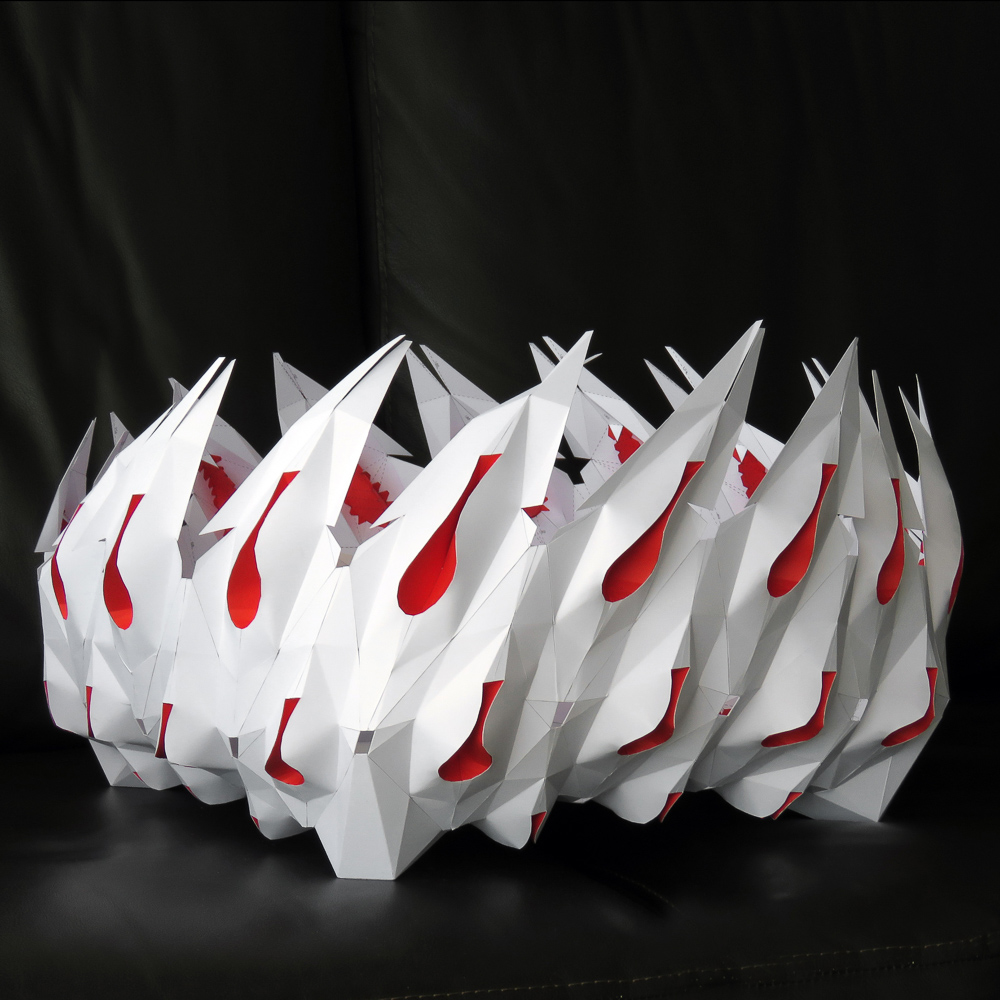 Horst Kiechle ✿ Digital weaving inspired by a Thai basket - Selected by Garland contributor Gary Warner, our July laurel goes to Horst Kiechle for his constructed paper object 2020 vPattern Basket.
Horst Kiechle ✿ Digital weaving inspired by a Thai basket - Selected by Garland contributor Gary Warner, our July laurel goes to Horst Kiechle for his constructed paper object 2020 vPattern Basket.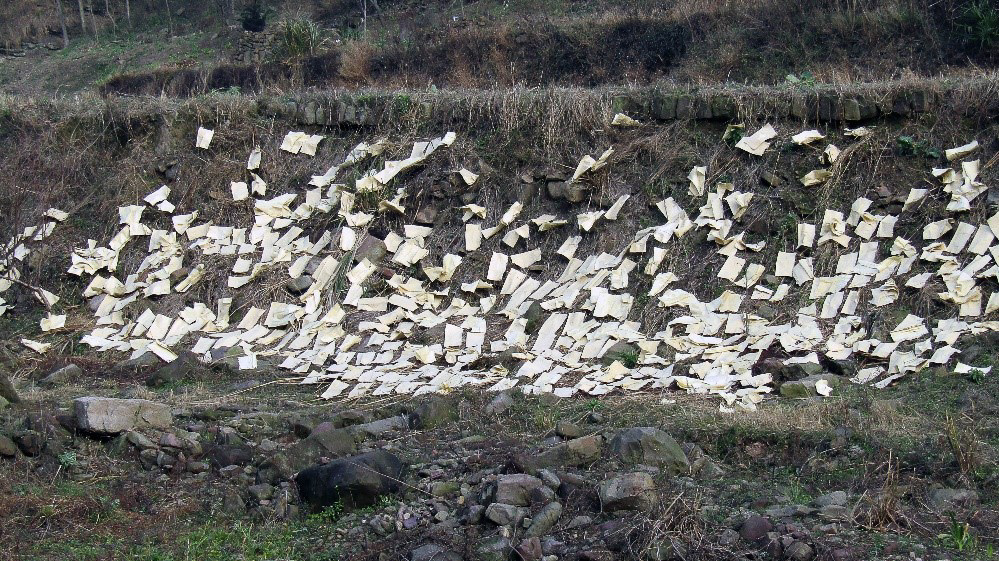 Wu Wei: “Nothing doing” is the future of Chinese papercutting - At a time of lockdown, Pamela See finds that Chinese papercutting can flourish by adopting the Taoist ideal of wu wei, doing nothing, in response to the apparent threat of new technologies.
Wu Wei: “Nothing doing” is the future of Chinese papercutting - At a time of lockdown, Pamela See finds that Chinese papercutting can flourish by adopting the Taoist ideal of wu wei, doing nothing, in response to the apparent threat of new technologies.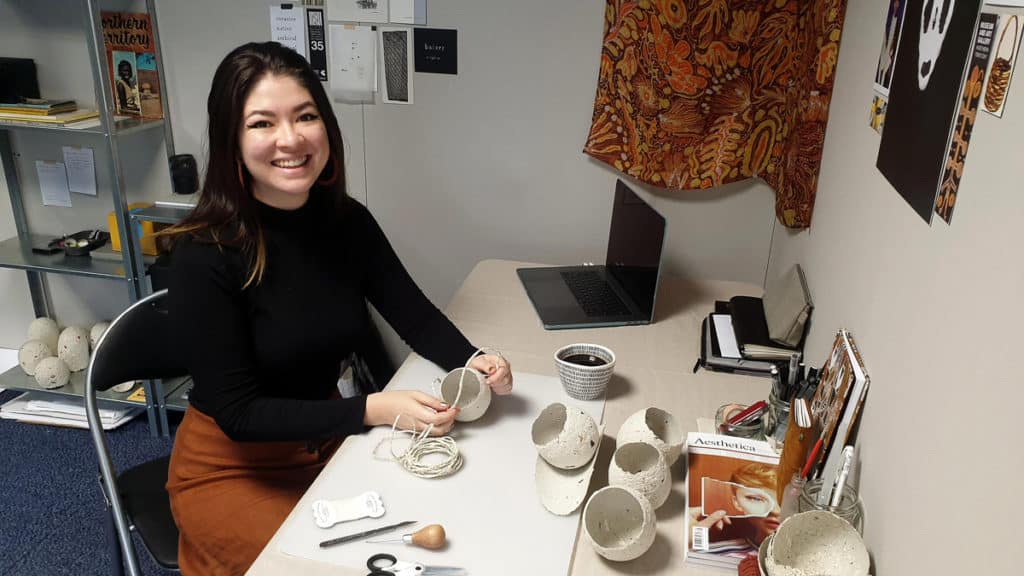 Jenna Lee ✿ Folds of memory - Jenna Lee's Memorise series shows how the process of folding can have strong symbolic meaning. It begins with an Instagram challenge...
Jenna Lee ✿ Folds of memory - Jenna Lee's Memorise series shows how the process of folding can have strong symbolic meaning. It begins with an Instagram challenge... Making the cut: The effects of the introduction of Computer Numerical Control (CNC) on the Chinese papercutting 2006-2018 - In reflecting on the recent history of papercutting in China, Pamela See identifies the threat to its creative energy posed by CNC cutting.
Making the cut: The effects of the introduction of Computer Numerical Control (CNC) on the Chinese papercutting 2006-2018 - In reflecting on the recent history of papercutting in China, Pamela See identifies the threat to its creative energy posed by CNC cutting. New space for objects in Sydney: HAKK by Gunjan Aylawadi - The inaugural Object Space exhibition will feature the work of talented paper artist Gunjan Aylawadi. Sydney-based paper artist Gunjan Aylawadi presents HAKK, a large-scale, intricate paper installation.
New space for objects in Sydney: HAKK by Gunjan Aylawadi - The inaugural Object Space exhibition will feature the work of talented paper artist Gunjan Aylawadi. Sydney-based paper artist Gunjan Aylawadi presents HAKK, a large-scale, intricate paper installation.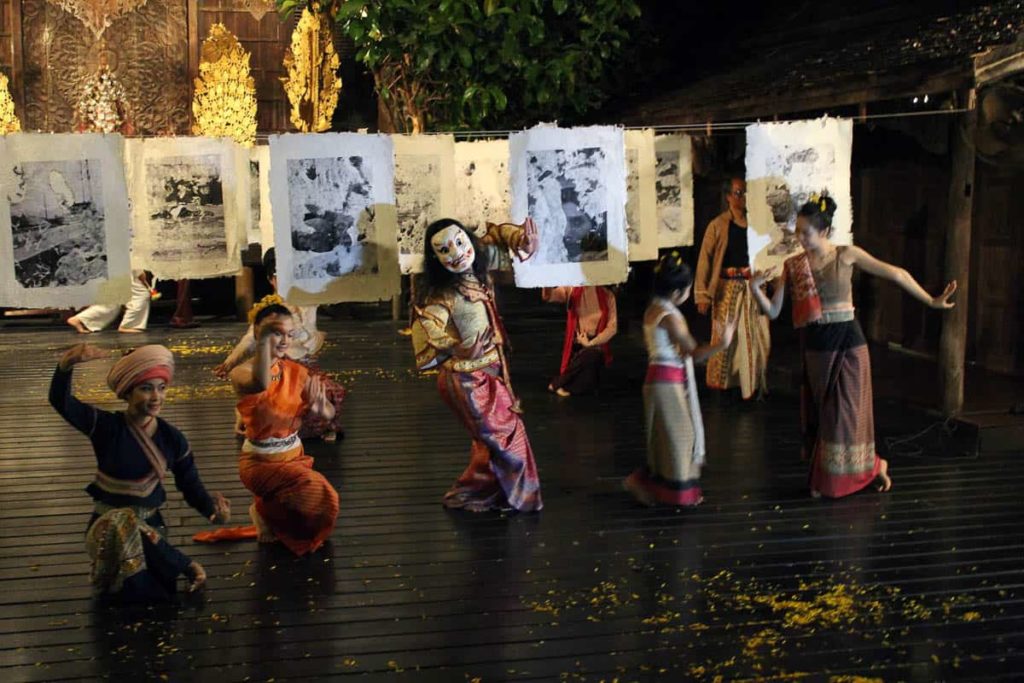 Hanging issues: Collaboration between photography and Lana paper making - A Kurdish photographer, doing a PhD at Melbourne's RMIT University, learns paper making in a northern Thai village in order to realise the emotions of the images gathered from the conflict in the Middle East. Rushdi Anwar shares the thinking behind this unique artistic alchemy.
Hanging issues: Collaboration between photography and Lana paper making - A Kurdish photographer, doing a PhD at Melbourne's RMIT University, learns paper making in a northern Thai village in order to realise the emotions of the images gathered from the conflict in the Middle East. Rushdi Anwar shares the thinking behind this unique artistic alchemy. Hanji – before and after Korea by Jan Coveney - Han-ji is the word for traditional Korean paper and it's also used to describe the art of making objects out of the paper.
Hanji – before and after Korea by Jan Coveney - Han-ji is the word for traditional Korean paper and it's also used to describe the art of making objects out of the paper.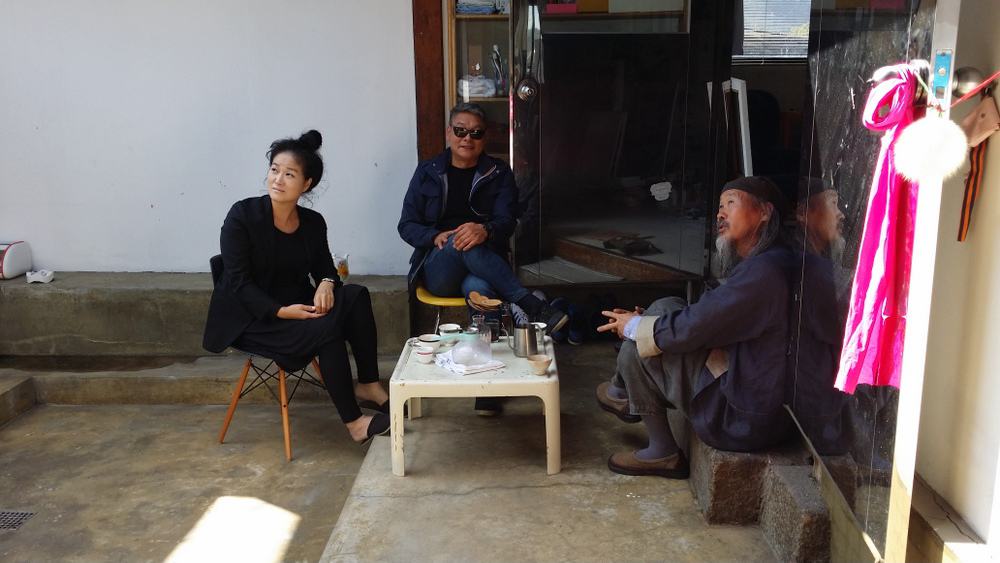 Yoon Jeong-won’s spiritual materialism - The artist Yoon Jeong-won uses storybook imagery to evoke the myriad of traditions in Korean culture. Besides major works for exhibition, she has a daily exercise of drawing on precious Korean paper made by Lee Jong Kuk (Mabeul), from a tree especially planted for her.
Yoon Jeong-won’s spiritual materialism - The artist Yoon Jeong-won uses storybook imagery to evoke the myriad of traditions in Korean culture. Besides major works for exhibition, she has a daily exercise of drawing on precious Korean paper made by Lee Jong Kuk (Mabeul), from a tree especially planted for her.

